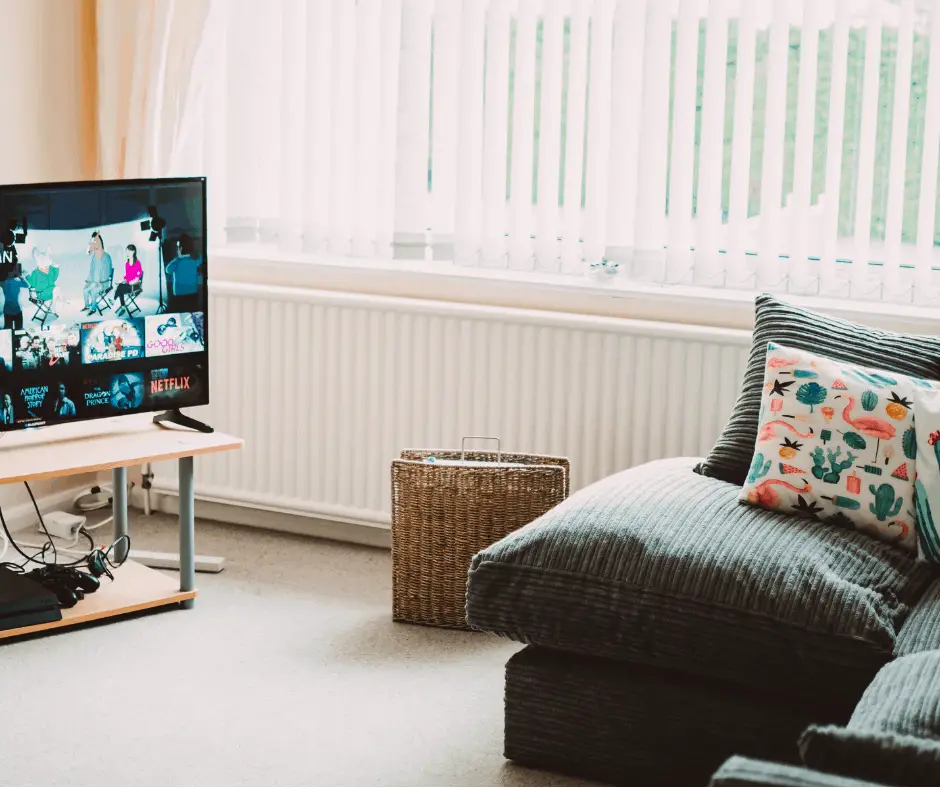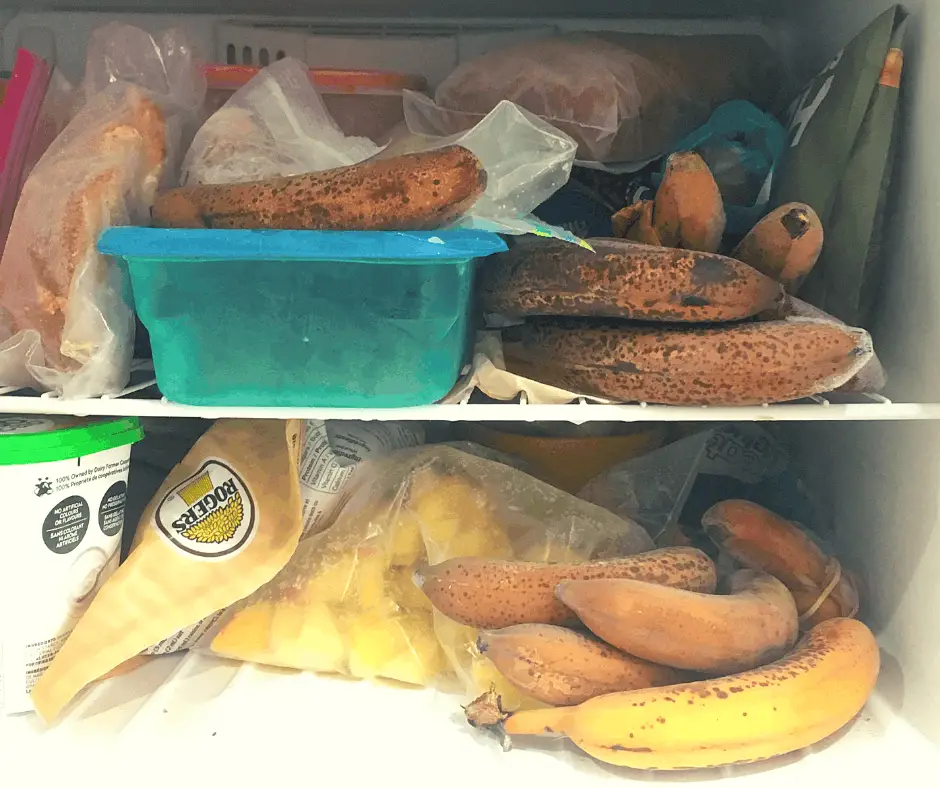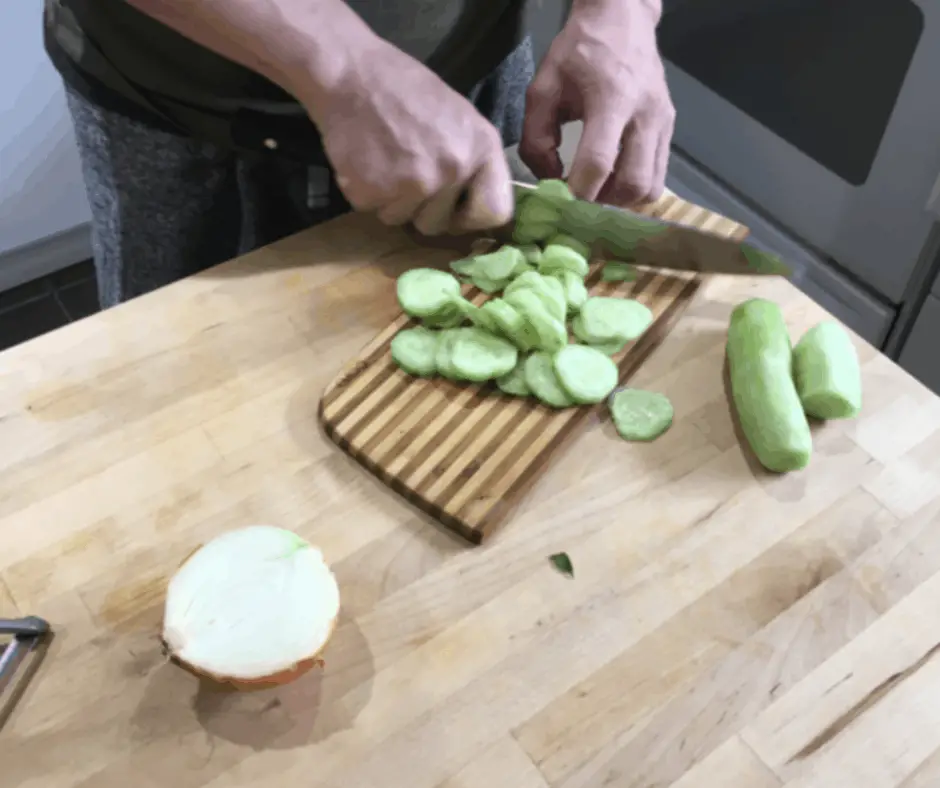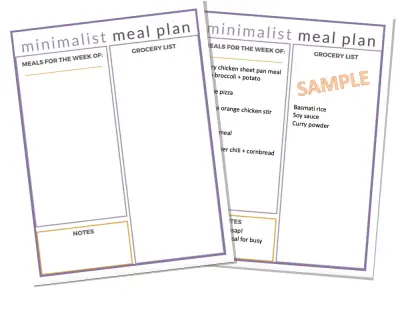As part of setting goals for the new year, G and I decided we would do the Uber Frugal Month Challenge by The Frugalwoods: a no spend month challenge! We like the idea of a whole month of really digging deep into our finances to make sure we are doing the best we can.
This page contains affiliate links which means I may earn a commission if you use them, at no additional cost to you. See disclosure policy for details.
We are participating in the Uber Frugal Month Challenge hosted by The Frugalwoods, here. If you’ve never heard of the Frugalwoods, OMG please go to their blog and read everything, then read their book. You will not be disappointed!

I love their insightful frugal living tips delivered in the captivating writing style of Mrs. Frugalwoods. They’re definitely on my list of top frugal blogs.
The Uber Frugal Month Challenge is a month-long email challenge hosted live each January and July, but you can sign up to get the daily emails any time.
In the words of Mrs. Frugalwoods:
“The Uber Frugal Month guides you through the process of saving as much money as you possibly can, but more importantly, it provides a re-set for the consumer mindset that many of us get caught up in.
This month prompts you to think not just about where you’re spending your money, but why you’re spending it.
Reforming your relationship with money isn’t a simple question of spending less and saving more, it’s a question of performing a holistic reflection on your priorities and how they relate to your money.”
As we went through the Uber Frugal Month Challenge, I shared my reflections on some of the tips that really stand out.
Top Takeaways From The Uber Frugal Month Challenge:
1. Get clear on what you want out of life
This will help you find your “why” for being frugal. You need a “why” to get you through the times that are tough. Willpower alone is not enough (willpower is never enough!).
Having a strong purpose in why you want to be frugal helps you actually stick to it. It’s not just about the money. It’s about all the things money can do for you such as give you freedom to live how you want.
You don’t have to be a slave to a job you hate just to make ends meet. You may not even have to work if you set yourself up financially by being frugal when it counts.
In this post, the Frugalwoods ask a few reflection questions to help you set some life goals and find your “why”.
- Why are you participating in this Challenge?
- What do you hope to achieve?
- What are your longterm life goals?
- Where do you want to be in 10 years?
- What about your current lifestyle might prevent those goals from coming to fruition and what can you do about it?

It was a great exercise for G and I as we hadn’t really sat down together to plan for the future.
We both wrote our answers to the questions separately, then read them together. It was lovely to see our longterm life goals aligned with each other!
The question that really hit home was the last one:
“what about your current lifestyle might prevent those goals from coming to fruition?”
Mrs. Frugalwoods
How powerful is that!?
I know a lot of people have unfulfilled dreams. What if everyone asked themselves how their current life is holding them back from reaching their goals and dreams?
Of course it’s important to follow up by asking what can you change about your current life to bring you more in alignment with your goals?
Powerful stuff!
2. Frugality is NOT about what you’re giving up
I was really struck by the mantra:
“When you’re working towards a goal, frugality isn’t about what you’re giving up, it’s about what you’re going to gain.”
The Frugalwoods
Read that again. ⬆️
Without the end goal, frugality can feel unrewarding and purposeless. That goal is what gives the long term drive to stick with it!
Even those who are frugal by circumstance more than choice can set a goal to help stay positive and feel a sense of financial control.
3. Wait 3 days before you make a purchase
The Frugalwoods challenged us to wait 3 days (or more!) to make any non-necessary purchase. By waiting a few days, you prevent impulse spending. You’ll probably realize you don’t really want or need the item anyway.
This can save A LOT of money, and probably prevent a lot of household clutter as well!
I have to admit, this one is fairly easy to me as I’ve been living frugally for so long. I’ve had a lot of practice! G has gotten better with practice too!
If you’re new to frugal living, or just starting to get back on track, this is an excellent and very effective exercise. Waiting a few days is a must during your Uber Frugal Month!
4. How much does that monthly expense cost over time?
One of the challenges was all about recurring monthly expenses. When you pay for something every month, it doesn’t seem like that much. What is $10, $25, or $100?
The eye opening part of it is when you multiply those recurring expenses by months and years.
You will see just how much you’re actually spending on subscriptions like cable, magazines or subscription boxes, or habits like daily coffee, cigarettes and takeout.
Not only are those expenses adding up month by month, whatever you spend on these expenses is not being invested and therefore has lost potential interest earned as well.
The Frugalwoods recommend this online calculator to easily assess how much these recurring expenses add up over time. You can even calculate the potential interest over time if you invested that amount instead of spending it!
Overall, we don’t have a ton of recurring monthly expenses due to being quite frugal already. But we decided to finally take the plunge and switch from our regular phone plans to a low cost phone plan. We’re Canadian, so we use Public Mobile and are on track to save well over $1000 this year compared to what we were paying for our old phone plans!!
I’m happy to report we’ve been using it for a few months now and are super happy with it!
Read my full Public Mobile review.

5. Eat up your pantry, fridge and freezer!
Eating through your cupboards is fun challenge, and a great way to save money during the Uber Frugal Month or any time really!
It’s extra easy to do in January because we bought a lot of food in December for hosting that hasn’t all been used up.
This also appeals to my minimalist side by clearing clutter.
We started by eating a chili and soup that had been in the freezer for well over half a year. We made a smoothie and a double batch of banana bread from the frozen fruit in there as well. Yum! There are probably still a dozen frozen bananas in there. We can’t be the only ones who have a freezer filled with bananas!

From the pantry, we opened a can of lychees (where did we even get them from?).
We also used some hemp flour in our smoothie. It’s not as nice in a smoothie because it’s gritty and green, unlike hemp seeds which blend perfectly. We will have to just eat it fo a while until it’s gone. It’s not our favorite thing, but it’s still nutritious and we will make sure to only buy hemp seeds next time.
We also found a can of tomato sauce that had passed the best before date by a few months. I made pizza and used it for the sauce 🙂
P.S. It’s perfectly ok to eat food passed it’s best before date. The name is literally “best before”, not “inedible by”. Just be cautious about food in dented, bulging or rusty cans, which should not be eaten.
Read: How to Do a Mini Pantry Purge Challenge
6. Minimize food waste!
I like to think we’re pretty good about not wasting food. We love eating leftovers, we save veggie scraps and bones for stock, we turn wilted fruit into smoothies or freeze it, regrow celery, lettuce, & green onions from scraps, and more.
When I cook with other people, I see what they throw out and know that we definitely waste less than the average household.
Upon reflection, we could definitely do better by preserving excess food, storing food properly, buying long storage produce, and planning our meals.
Read the best ways to store green onions to keep them fresh longer!
Preserving food to prevent food waste:
By preserving food, I mainly mean freezing it, but also could include canning, fermenting, or dehydrating.
I bake sourdough bread and turn it into breadcrumbs or croutons if it gets dried out. I’ve noticed we have A LOT of breadcrumbs though. I’m going to start freezing half the loaf right off the bat so we can eat it as bread.
Also we occasionally throw out a portion of soup that got forgotten about in the back of the fridge. If we just freeze a portion or two right away after cooking it, this would probably be completely prevented.
Store food properly to prevent food waste:
The forgotten leftovers happen noticeably more often when we put leftovers in an old yogurt container compared to when we store it in a clear container.
A simple switch!
The minimalist in me wants a set of matching glass snap top storage containers, but the frugal side can’t justify spending the money.
We take the labels off jars and clear plastic containers and use our pyrex baking dishes with lids as much as possible, so that will have to do for now.


Meal plan (even just a bit) to prevent food waste:
We need to plan our meals. There, I said it! For some reason I’m so resistant to meal planning.
Logically I know it can help prevent food waste and save money, but for some reason it just feels so restrictive to have the meals planned out in advance and having no choice of what to eat on the day.
I know it doesn’t even have to be like that.
Right now we got to the store and buy what’s on sale. Often we check the flyers to see the sales in advance, but we find the best deals tend not to be listed in the flyer.
It’s the marked down items that we stock up on, like short-dated yogurt that is 50% off the sale price, plus a coupon that save us a lot of money. But sometimes we buy too much and end up wasting it. It’s not a good deal if you don’t use it.
I suppose a balance of planning ahead and being flexible is key. Balance is the answer to everything it seems!
These simple switches could save a lot of wasted food, along with the money spent on that food!
Read more about saving money on food:
How to Spend Less on Groceries
12 Things we Don’t Buy to Save Money on Groceries
7. Frugal living gives you options
A great takeaway from the Uber Frugal Month challenge is the idea that being frugal gives you options on how you are able to live your life.
Mrs. Frugalwoods
Don’t let your spending prevent you from doing what you want with your life. Rather, let frugality sculpt the life you crave.
By being frugal in small ways day-to-day you might be able to save enough to travel more often or buy a house.
In the best case scenarios, living frugally and becoming financially independent gives you the option to do what you want with your life!
You may be able to retire early, or take a lower paying job that you love, instead of being stuck in a job that you hate in order to pay the bills.

If you’re living paycheck to paycheck, you have very few options to control your future. In addition to that, if you get sick unexpectedly or are laid off from your job, you might end up in a major financial crisis!
In many cases, living frugally can reduce the impact of an illness or a job loss because you are already living below your means and have an emergency fund set up.
Losing your job may still be a huge blow, but the emergency funds you have saved will help you pay your bills while you look for a new job. If you live paycheck to paycheck, there is no buffer and a job loss could leave you in debt or even homeless!
I realize this may be a sensitive subject for many people living on a very low income and I certainly acknowledge that social assistance and some wages are simply not livable.
Wherever possible, I advocate for increasing the minimum wage and social assistance rates to be livable. In many areas, $15/hr is considered livable, although few places are actually there yet.
This advice is most relevant to people making at least a livable wage, up to high income earners. I know many couples who make six figures and still live paycheck to paycheck.
Even still, frugal living by necessity (living on a low income) is still a way to have some control on your finances. Do the best you can with what you have and use frugality to keep you afloat or even get ahead.
Read more about the Frugalwoods take on how frugal living gives you options here.
8. Get your friends and family on board with frugality
I’m a naturally frugal person, and G is also pretty frugal by nature. This makes it soooo much easier to live frugally since we’re both on the same page most of the time.
Doing the Uber Frugal Month Challenge together is fun for us, although we have had a few tough conversations. There is nothing wrong with having tough conversations with your partner about important things.
If your family are spending while you’re alone in trying to be frugal, you’ve definitely got a bigger challenge ahead.
The Frugalwoods have a great post with many ideas on how to convince your partner to be more frugal.
Some of the highlights:
- use positive reinforcement to reward small positive changes
- talk about your finances regularly
- keep some (or all) of your finances separate
- compromise and meet in the middle financial ground
- set shared goals that you can work towards together
- try a no spend challenge together
As for having a social life with your friends while being frugal, it can either be an added challenge or make your life easier, depending on your friends!

Obviously it’s easier when your friends are also frugal. They just ‘get it’ and will be happy to choose frugal activities to do together.
Frugal friends probably enjoy sharing meals together at home rather than at restaurants. They love clothing swaps, netflix, and being outdoors more than shopping, concerts and bar nights.
Frugal friends also probably have great ideas on how you can be even more frugal and can connect you to their network of other frugal people that you can barter and trade with!
If your friends are spendy, it becomes a bit more challenging to maintain a relationship with them when spending money is a normal part of your time spent together. As always, you’ve got options!
Try these tips:
- suggest free activities
- suggest low cost activities
- be honest and upfront with them and explain that you’re prioritizing your finances and “_____” activity just doesn’t align with your priorities anymore
- If they’re a friend worth having, they’ll understand. If they get upset or ridicule you, spend less time with them, and more time with friends who support you
Surround yourself with likeminded people who will support you on your frugal journey!
9. Grocery shopping and how to avoid last minute takeout
Frugal grocery shopping is one of my favorite frugal living topics!
Groceries are a necessity, but is also one of the most flexible expenses, so is an easy target during a no spend challenge! As I mentioned earlier, we’ve been eating up the food in our pantry and freezer, and trying to reduce food waste.

Here are some other articles about frugal groceries:
- 12 Things We Don’t Buy to Save Money on Groceries
- Ultimate list of How to Spend Less on Groceries
- 11 Completely Free Ways to Eat Healthier on a Budget
The Frugalwoods have a great solution to avoiding last minute takeout when life gets in the way of plans (as it does): frozen pizza!
They always keep a few on hand for those times that they’re running late, or dinner got burnt or they just don’t feel like cooking. It’s a great idea to have it as a backup as it is much cheaper than takeout, but is ready in minutes with little clean up.
We do the same with home made frozen meals like chili, stew, soup, curry, or bolognese. There are always a few in the freezer ready to be thawed for a delicious dinner that’s ready in minutes!
10. DIY Frugality
This is another favorite of the Uber Frugal Month so far! The Frugalwoods challenge us to do-it-yourself and stop paying others to do things for you.
DIYing can save a lot of money, and it often even saves time! Many things you can DIY without any special skills or tools, like preparing your own food instead of buying pre-chopped veggies.
Other DIY projects take some initial time to learn a new skill, but are worth doing as you watch it pay off in time and money savings over time!
For example, we DIY haircuts, food prep, and more.
If you do a lot of these, you may be a frugal minimalist!
Food Prep:
Wash, peel, chop, and portion your own food instead of buying it that way. Pre-washed and chopped salads, spiralized veggies, grated cheese and pre-portioned oatmeal are almost always significantly more expensive than the whole versions of the same foods.
Some exceptions:
- frozen produce is prepared, but is often less expensive than fresh.
- people with limited ability may find it easier to spend the extra money to get pre-chopped food. Try saving money elsewhere.
- pre-chopped food can be a great stepping stone to transition from buying takeout or ready-made meals to cooking.

Personal Care:
- Do your own nails.
- Style, cut, & dye your own hair.
- Make your own soaps, lotions, body scrubs, etc.
Clothing:
- Mend your clothes and shoes yourself instead of taking them to a tailor, or buying new clothes.
- Make your own clothes if you’re super crafty!
- DIY your own costumes and accessories instead of buying them off the shelf.
Home Decor:
- Craft or refurbish furniture and home decor instead of buying new.
- Build your own flat-pack furniture, instead of hiring someone to do it for you.
Read: How to Design & Organize a Minimalist Kitchen
Home and Garden:
- Cut your own lawn, or better yet, turn it into a vegetable garden!
- Grow green onions or celery from the ends.
- Try to do minor home repairs and renovations on your own before hiring someone.
- Clean your own home and skip the cleaning service!
- Make your own cleaning products using basic ingredients like baking soda, vinegar, rubbing alcohol, and dish soap. See some recipes here.
Most of these are simple things we could do ourselves instead of paying someone else to do them. Why not learn a new skill, use your hands, and try something new?
Uber Frugal Month Takeaways:
Saving money on our groceries by minimizing food waste and clearing out the freezer and cupboards are great ways to reduce your spending during your Uber Frugal Month.
Practicing mindfulness with your spending is a great way to check in. How much are those monthly recurring expenses *actually* costing? Do I need that thing *right now* or can I reflect on it for a few days?
I also loved the discussion about the purpose behind frugality. You’re much more likely to stick with a habit when you have a solid reason why you’re doing it, and you approach it from a positive mindset. What do you gain from living a frugal life and how can it help you achieve your long term goals and dreams?
Try some DIY, focus on eating frugally by checking in on your grocery shopping and last minute take out meals, reflecting on the options that frugality provides, and learning how friends and family can make a huge difference on how much we spend.
The great part of doing the Uber Frugal Month Challenge is not only that you save money in the short term, but your normal way of doing things is questioned. It’s a prompt to try new ways of doing things.
Maybe you’ll go back to how you normally do things, or maybe you’ll develop new longterm habits that bring you closer to the life you want to live.
What Uber Frugal Month tip stands out most for you? Which one are you going to focus on next? Comment below!




Ooh ooh. I recently discovered (like in the last week), that the jars that Classico sauce comes in are actually really nice jars once you take the cover off. We usually make our own sauce but the premade stuff comes in handy sometimes. And it’s building a nice mason jar collection for leftovers. Oh and standard mason jar lids fit. 🙂
Oh nice! I didn’t know that standard mason jar lids fit those. Bonus!